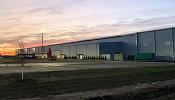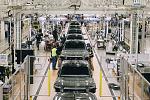Senior Vice President, Business Banking Sales Director
- FMA
- The Fabricator
- FABTECH
- Canadian Metalworking
Categories
- Additive Manufacturing
- Aluminum Welding
- Arc Welding
- Assembly and Joining
- Automation and Robotics
- Bending and Forming
- Consumables
- Cutting and Weld Prep
- Electric Vehicles
- En Español
- Finishing
- Hydroforming
- Laser Cutting
- Laser Welding
- Machining
- Manufacturing Software
- Materials Handling
- Metals/Materials
- Oxyfuel Cutting
- Plasma Cutting
- Power Tools
- Punching and Other Holemaking
- Roll Forming
- Safety
- Sawing
- Shearing
- Shop Management
- Testing and Measuring
- Tube and Pipe Fabrication
- Tube and Pipe Production
- Waterjet Cutting
Industry Directory
Webcasts
Podcasts
FAB 40
Advertise
Subscribe
Account Login
Search
Tax benefits boost incentives for year-end financing of fabrication equipment
- By Scott C. Edwards
- November 29, 2018
- Article
- Shop Management
For custom fabricators and other equipment-intensive businesses, the fourth quarter is an optimal time to consider the tax advantages of acquiring new equipment to stay ahead of the competition.
Forward-thinking fabricators and manufacturers are already considering profits, losses, and sales projections as the year winds down. Many may be considering upgrading equipment, replacing aging equipment, or expanding capacity. Now is the time to determine the best way to pay for capital equipment and maximize the benefits of recent tax reform legislation for qualifying purchases.
Financing capital equipment enables fabricators to conserve their cash and lines of credit while providing maximum flexibility. Financing at the end of the year also is a smart way to use any remaining capital budget while preparing for the year to come. Finally, banks often offer more advantageous pricing in the fourth quarter for select finance offerings.
Making the Most of Tax Reform
Many businesses are enjoying improved profitability in 2018 as a result of tax reform. The Tax Cuts and Jobs Act of 2017 (TCJA) significantly lowered income tax rates for many businesses and expanded available writeoffs for businesses of all sizes. This overall lower tax burden for America’s companies is allowing many business owners to consider reinvestment or expansion of their businesses.
For many, the asset depreciation associated with capital equipment plays an important role in fiscal management. Most equipment acquisitions offer depreciation benefits, but determining whether a company can effectively use all of that depreciation requires some consideration. This is especially true for equipment-intensive businesses. Full taxpayers in need of the sheltering effect of equipment depreciation typically benefit from tax ownership of equipment. This can be accomplished with a loan, installment payment agreement, and some leases. These options allow the business to deduct depreciation and interest charges from taxable income.
In the past, small businesses with limited capital budgets often took advantage of the IRS Code Section 179—an incentive created by the U.S. government to encourage businesses to invest in capital equipment. Section 179 allows a business to fully write off the cost of a limited amount of capital investment on that same year’s tax return as a cost of doing business. Section 179’s capital spending limits and resulting tax writeoff have historically been beneficial, but subject to expiration and renegotiation by Congress every few years.
Tax reform has now made this benefit permanent. Beginning in 2018, the deduction was increased to $1 million on an equipment investment limit of $2.5 million. Section 179 has always applied to new build and preowned equipment purchases. However, the new changes are applicable to a broader set of assets, including HVAC and ventilation systems, fire protection, and security systems. Manufacturers should consult with their tax adviser to determine if Section 179 can benefit the business this year.
The Tax Lease Option
Companies with a more complex tax situation also may want to consider a tax lease. Tax leases effectively trade tax depreciation for lower payments by shifting tax ownership to the financing source. Plus, tax leases allow the entire lease payment to be deducted as an operating expense on the business’s tax return. Following is a list of factors to consider when evaluating equipment acquisition options:
Bonus Depreciation Becomes a 100 percent Writeoff—The TCJA also has provided accelerated equipment writeoffs for companies with larger capital equipment budgets. For equipment placed in service after Sept. 27, 2017, and before Jan. 1, 2023, businesses investing in qualified equipment can expense 100 percent of the equipment cost in the first year of ownership. Most equipment depreciated under the Modified Accelerated Cost Recovery System (MACRS) qualifies for the 100 percent writeoff, but a financial adviser should be consulted for specifics.
The temporary 100 percent expensing benefit is an unprecedented windfall for businesses with sufficient taxable income to claim it. That said, the benefit of such a writeoff has less impact in a lower tax rate environment; therefore, more businesses might be unable to absorb all the depreciation benefits available to them. As a result, even full taxpayers could now find that a tax lease allows them to monetize otherwise unused depreciation benefits more efficiently and, therefore, provides the lowest after-tax cost to acquire equipment.
Note that the temporary increase in expensing allowance applies to new or preowned equipment purchases. Additionally, the 100 percent expensing benefit will begin to phase out in 2023, by offering an 80 percent bonus (in addition to regular MACRS deductions), which then will be lowered by 20 percent each tax year thereafter. Thus, an 80 percent bonus applies in 2023, 60 percent in 2024, and so on.
Loan Interest Deductions Now Limited—The TCJA now places limits on deductions related to interest accruals and payments made on debt in a given tax year. Unfortunately, this could negatively affect heavy borrowers and those investing in business growth and expansion activities. Equipment leasing could help to offset the pain, however, because rental payments arising from a tax lease are not included in this calculation.
Midquarter Convention—The midquarter convention states that if a company acquires more than 40 percent of its capital assets during the fourth quarter, it must recalculate its depreciation expense using the midquarter convention tables. Most companies attempt to avoid the midquarter convention by closely managing the amount of assets they purchase (and place in service) during the fourth quarter.
Leasing gives a manufacturer the freedom to obtain the equipment it needs, when it’s needed. With tax leases, businesses avoid the fourth-quarter asset acquisition restrictions because the leasing company is the tax owner of the equipment; yet the business still receives the tax benefits in the form of lower payments. Leasing can be a helpful option when project delays or unexpected equipment replacement needs arise in the fourth quarter.
Selecting a Financing Partner
Choosing a finance partner to acquire equipment doesn’t need to be complicated. Businesses should seek out a partner that offers a consultative approach and can accommodate their business needs and budgetary requirements.
While any time of the year is a good time to finance equipment, the fourth quarter puts additional focus on the possible tax benefits of bringing new equipment online before the new year. After all, the benefit of equipment comes from its use, not its ownership.
About the Author
Scott C. Edwards
1000 South McCaslin Boulevard
Superior, CO 80027
1-888-301-6238
subscribe now

The Fabricator is North America's leading magazine for the metal forming and fabricating industry. The magazine delivers the news, technical articles, and case histories that enable fabricators to do their jobs more efficiently. The Fabricator has served the industry since 1970.
start your free subscription- Stay connected from anywhere

Easily access valuable industry resources now with full access to the digital edition of The Fabricator.

Easily access valuable industry resources now with full access to the digital edition of The Welder.

Easily access valuable industry resources now with full access to the digital edition of The Tube and Pipe Journal.
- Podcasting
- Podcast:
- The Fabricator Podcast
- Published:
- 05/14/2024
- Running Time:
- 62:12
Cameron Adams of Laser Precision, a contract metal fabricator in the Chicago area, joins the podcast to talk...
- Trending Articles
White House considers China tariff increases on materials

A visit to Automate 2024 reveals the future might be now

Majestic Steel Arkansas fully operational

Rivian to expand Illinois facility to manufacture midsized SUV

Why employee-owned companies make sense in manufacturing

- Industry Events
Laser Welding Certificate Course
- May 7 - August 6, 2024
- Farmington Hills, IL
World-Class Roll Forming Workshop
- June 5 - 6, 2024
- Louisville, KY
Advanced Laser Application Workshop
- June 25 - 27, 2024
- Novi, MI
Precision Press Brake Certificate Course
- July 31 - August 1, 2024
- Elgin,



























